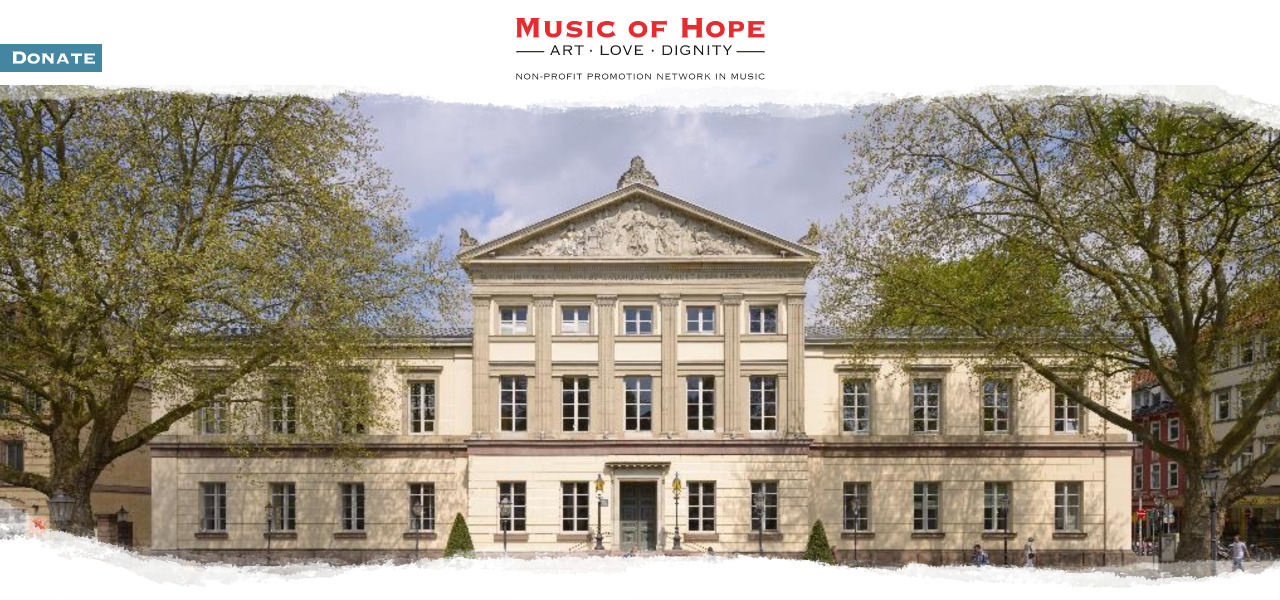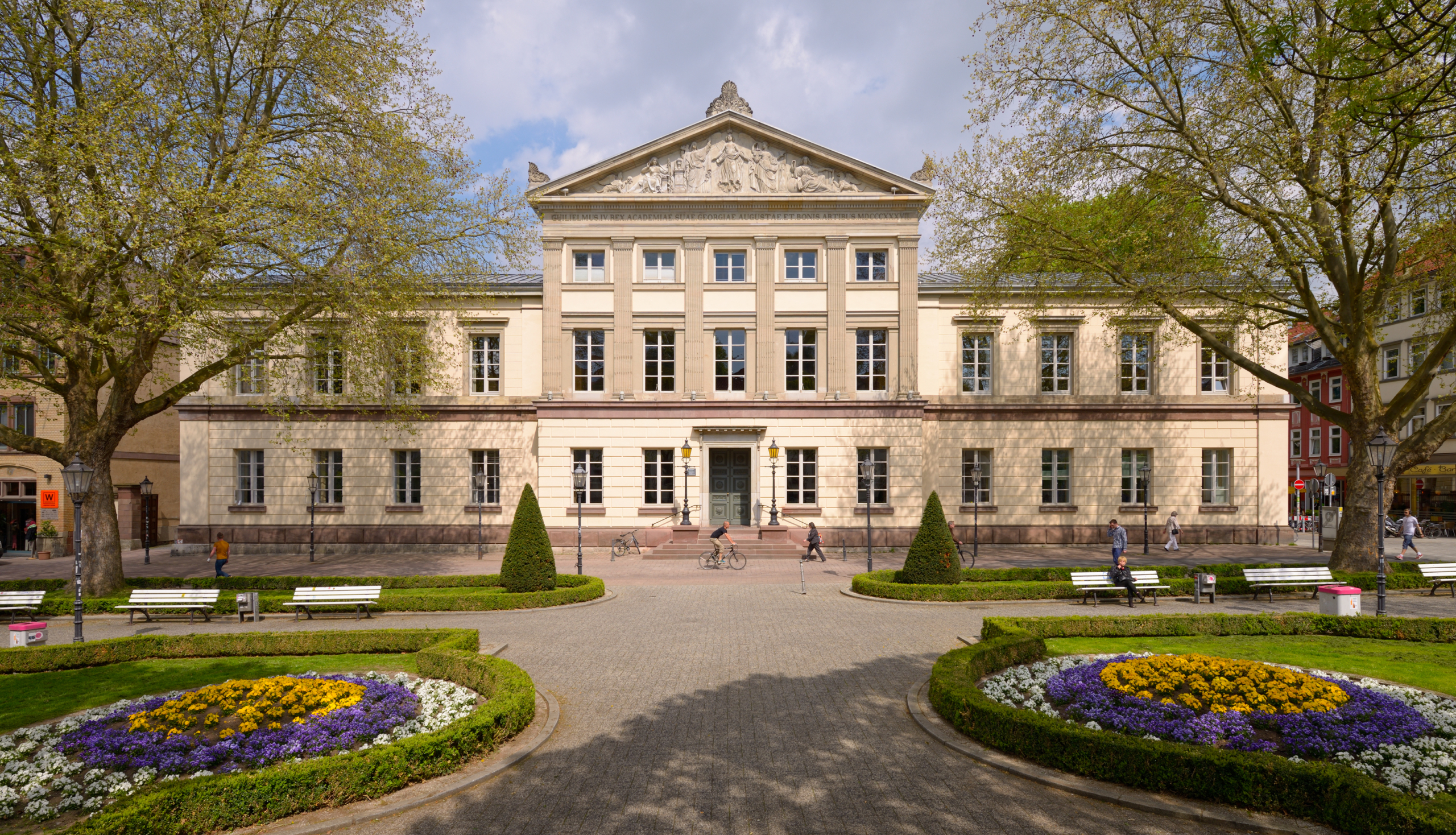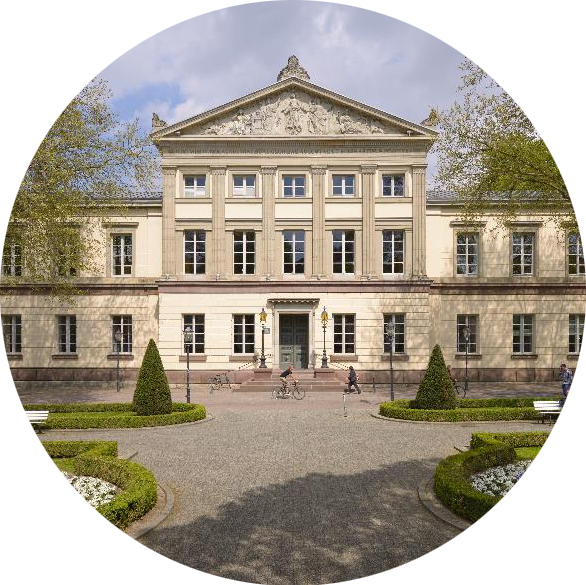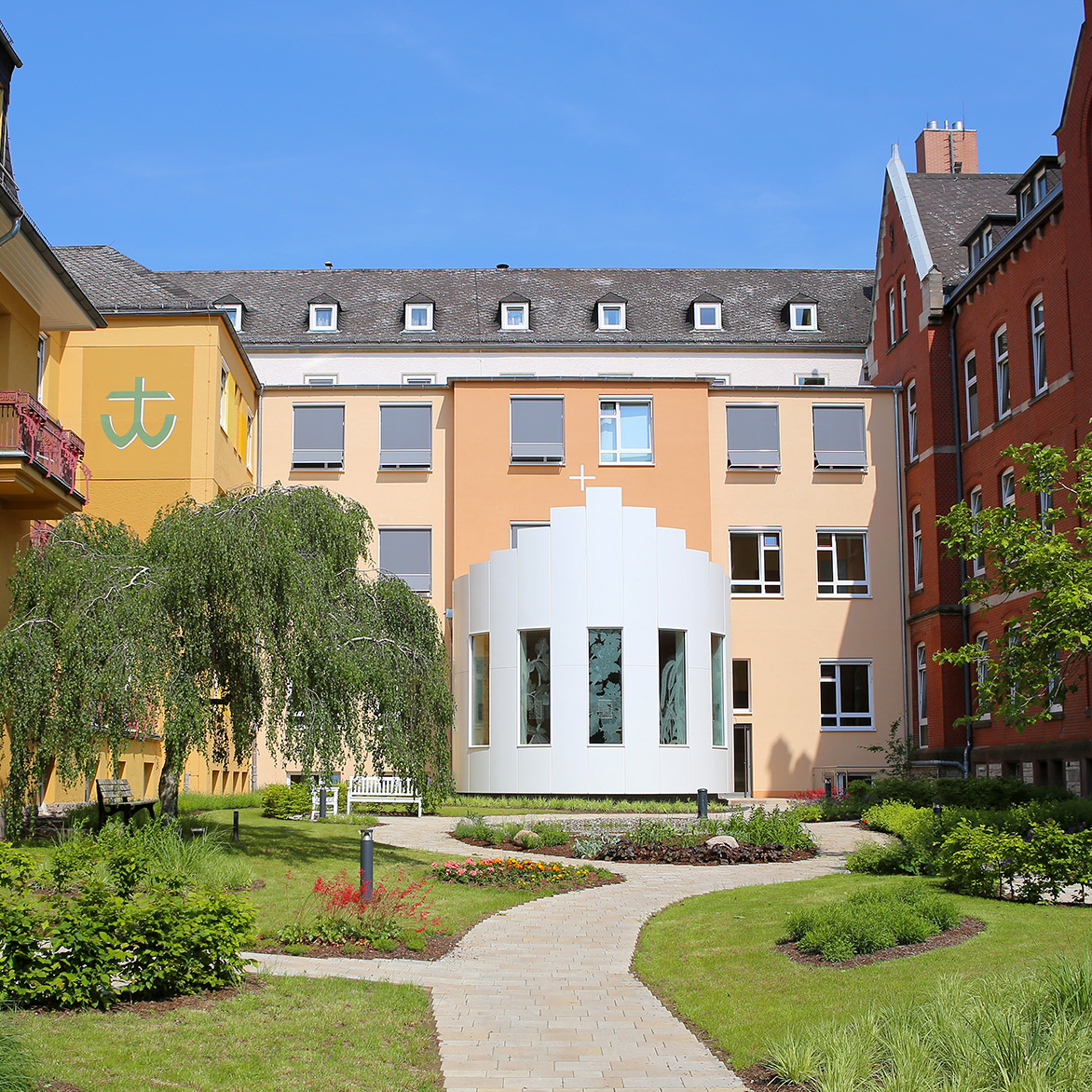Historical Aula of the University of Göttingen
The Aula on today’s Wilhelmsplatz in Göttingen is one of the most important university buildings, built between the first wave of construction after its foundation in the 18th century and the extensions by the Prussian Cultural Administration after the annexation of Hanover by Prussia in 1866. The Aula building, designed by university architect Otto Praël (1793 to 1862), was inaugurated in 1837 to mark the centenary of the Georgia Augusta. King William IV of Great Britain and Hanover had donated the building, thus fulfilling the university’s wish for a representative building for ceremonial occasions. The late classicist façade features a rich architectural sculpture in natural stone created by the sculptor Ernst von Bandel, who worked at the Hanoverian court at the time. He also created the monument of the statue of King Wilhelm IV the opposite site on the Wilhelmsplatz, a square in the center of the old university. Even today, the Aula, which seats over 500 people, is primarily used for internal university events.
Neu-Mariahilf Chapel
Neu-Mariahilf Chapel was consecrated by Bishop Ralf Meister in 2017. It is a wonderful space flooded with light with frameless floor-to-ceiling motif windows by Hartmut Berlinicke and the floor plan of a historical Romanesque choir with a perfect height ratio. A place of silence, prayer, and art. Historic church elements are cleverly integrated into the modern building. The chapel offers flexible seating for up to 70 people. It is one of the best sound spaces in Göttingen. It is equipped with a historic Bechstein grand piano.









